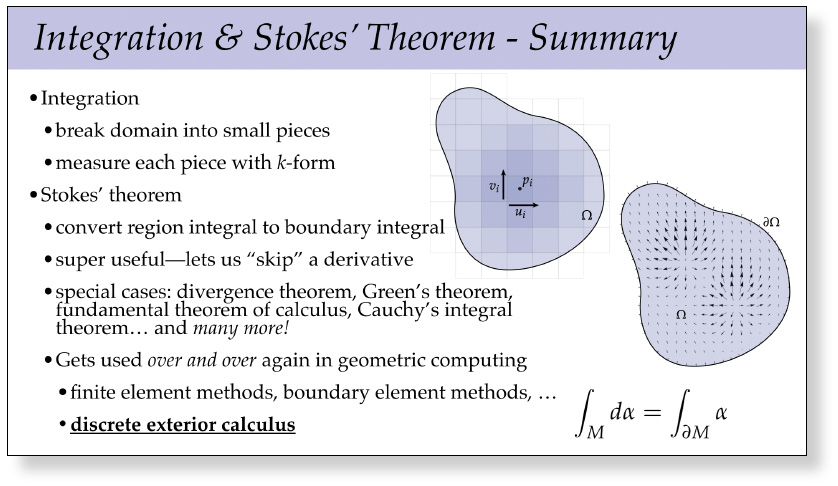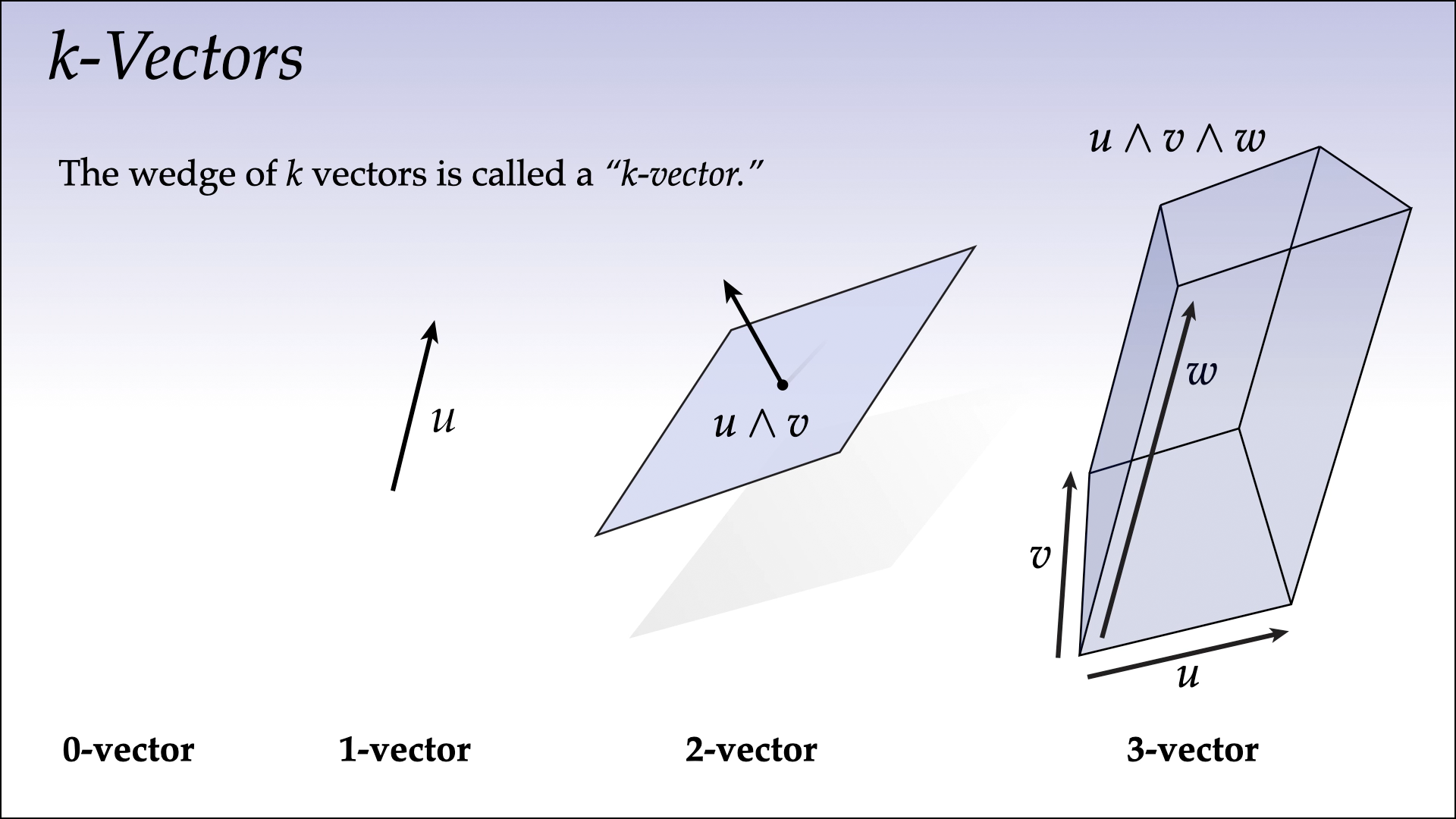
This lecture takes a first look at smooth surfaces. There’s of course way more to know about surfaces than we can pack into a single lecture (and we’ll see plenty more later on), but this lecture will cover two very important perspectives: the extrinsic description of a surface via a local parameterization, which tells us where points sit in space, and the intrinsic description of a surface via coordinate charts, which lets us work with a surface without worrying how it’s embedded in space.




